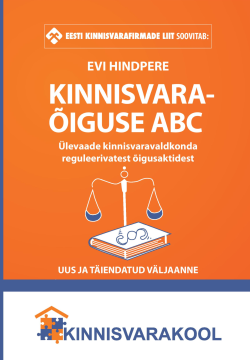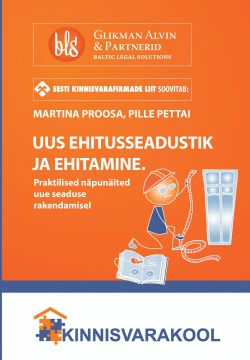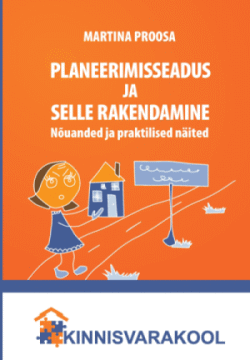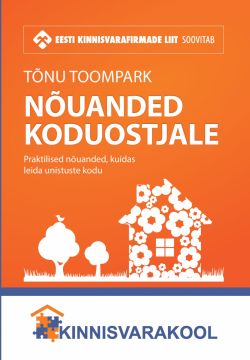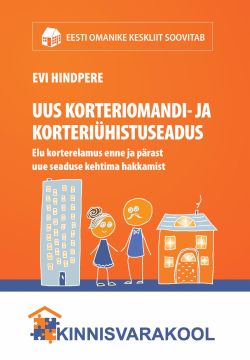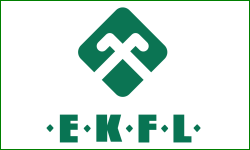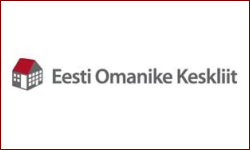 The number of transactions in April was similar to that of March but due to changes in the structure of transactions, the median price was the lowest in the last six months. 1,817 transactions were concluded in April, which was 19 transactions less than in March. Due to a smaller share of the most expensive areas, the median price of the transactions was 3.8% lower (1,285 EUR/m2). Compared to the first four months of last year, the number of transactions has increased by 0.4%, the median price of transactions, however, by 11%.
The number of transactions in April was similar to that of March but due to changes in the structure of transactions, the median price was the lowest in the last six months. 1,817 transactions were concluded in April, which was 19 transactions less than in March. Due to a smaller share of the most expensive areas, the median price of the transactions was 3.8% lower (1,285 EUR/m2). Compared to the first four months of last year, the number of transactions has increased by 0.4%, the median price of transactions, however, by 11%.
The growth in the number of transactions has slowed down mainly due to a large gap between the requested price and the transaction price outside larger towns, which is also closely related to the decrease in the number of public offers. The growth in the number of transactions has also been hindered by a decrease in population, scarcity of new developments and strong pressure outside the apartment market. Therefore, instead of buying an apartment, more enterprising people in rural areas have preferred to renovate their current apartment or buy a plot of residential land (either with or without buildings) with a purpose of living in a private house. Outside the most densely populated counties, the total value of transactions with built-up residential land was 38%. The statistics do not include unimproved residential land transactions and construction for own use.
Both in regard to the number of transactions and the median price, the market sentiment has been mainly influenced by Harju County. Its large share in the total value of apartment transactions has continued to grow in the past five years (76.6%→78.6%). In Harju County, during the first four months, 45 transactions more were concluded compared to the same period last year, the median price of the transactions increased by 7.5%. Of other larger counties, Tartu County continued to grow with an increase in the number of transactions by 29. The median price increased even by 10.6% due to an increase in the share of new developments. In Pärnu County, the median price increased by 13.2%, whereas the number of transactions decreased by 15. In the remaining counties, changes have been even more dramatic due to the small number of transactions: in Lääne-Viru County and Järva County, over 20 transactions more were concluded in the first four months of the year, 19 transactions less in Lääne County. The median price of the transactions decreased by more than one fourth in Hiiu and Rapla Counties, in Jõgeva County it increased even by 31.2%.

In Tallinn, similarly to the rest of Estonia, in April, a smaller number of transactions was concluded compared to March. 781 concluded transactions still means that in comparison to the first four months of last year, 73 transactions more have been concluded in 2018 (+2.3%), the median price has increased by 6.8%, mainly due to the price increase and a continually large amount of new developments (1,627→1,738 EUR/m2).
In comparison to the first four months of last year, the number of transactions decreased most in the Centre and Northern Tallinn (40 and 65 transactions less, respectively) which on the one hand is caused by the distribution of real right transactions but on the other hand is a part of a longer-term trend which has taken a gradually increasing number of new developments (and thus, also consumers) to the outskirts. Thus, in Lasnamäe, the number of transactions increased by 64 and in Mustamäe by 55. The growth in the median price has been equally fast everywhere, lead by Haabersti and Kristiine where due to the growth in the number of new developments, the median price increased by 12.5% and 11.7% in comparison to last year. The highest median price could be observed in the Centre (2,349 EUR/m2), followed by Kristiine (2,003 EUR/m2) and Northern Tallinn (1,855 EUR/m2).
The sustainability of the market of Tallinn is supported by a stable growth in the population: within the past five years, the population of Tallinn has increased by over 24,000, i.e. by 5.7%, exceeding the line of 450,000 on May 1st. The number of residents increased in all the city districts, most of all in the Centre – even by 18.2%.

After the active March it could be predicted that in April both the number of transactions and the median price should decrease in Tartu where the share of new developments was considerably smaller than in Tallinn. Thus, as predicted, 46 transactions less compared to March were concluded in Tartu in April, and the median price decreased by 2.4% Compared to the first third of last year, the market is still growing – the number of transactions increased by over 60, the median price increased by nearly 11% (1,221→1,324 EUR/m2).
In the even smaller Pärnu, the market has recovered rather well in the past years, creating a demand for new real estate. Purchasing power has supported the development of new apartments, and thus, the market of Pärnu has continued its stable growth – the number of transactions has remained at the level of the first third of last year, the median price has quickly increased, by 18.2% compared to last year (1,023→1,209 EUR/m2).
Unlike Tartu and Pärnu, the revival of the real estate market is taking longer in Narva. In comparison to the first four months of last year, the total value of real estate transactions was 88% of that of last year. The number of transactions is still at a low level, whereas the median price has remained at the level of last year.

In April, we are looking at the small towns of Estonia where similarly to larger ones, significant differences can be observed in regard to the recovery of the market. The most positive developments have taken place in Rakvere and Viljandi where the number of transactions has remained consistent during the past three years. It has been facilitated by a considerably smaller decrease in the number of employees in comparison to other towns. In Rakvere and Viljandi, during the past five years, the number of salaried workers has decreased by less than 2%, whereas in Kuressaare the decrease has been 3.8%, and in Haapsalu, 10.5% of workers have disappeared (the town has still not recovered from the closure of the PKC factory). Therefore, in addition to Võru where unemployment has historically been higher than average, also in Haapsalu (compared to Rakvere or Viljandi), the unemployment percentage is higher by more than one per cent. The influence of the number of workers to the number of transactions is obvious: in Haapsalu, the number of transactions decreased by 16 and in Kuressaare by 21 compared to the first four months of last year.
In the county towns, demand for a new homes has remained strong but the decrease in the number of public offers has increased the pressure towards price increase. Compared to the same period last year, prices increased considerably everywhere, in Haapsalu, Rakvere and Viljandi, the median price increased by over 20%, in Kuressaare by 17.2% and in Võru by 14.5%. Such developments have increased interest in new developments, the volumes of which are still rather low.






